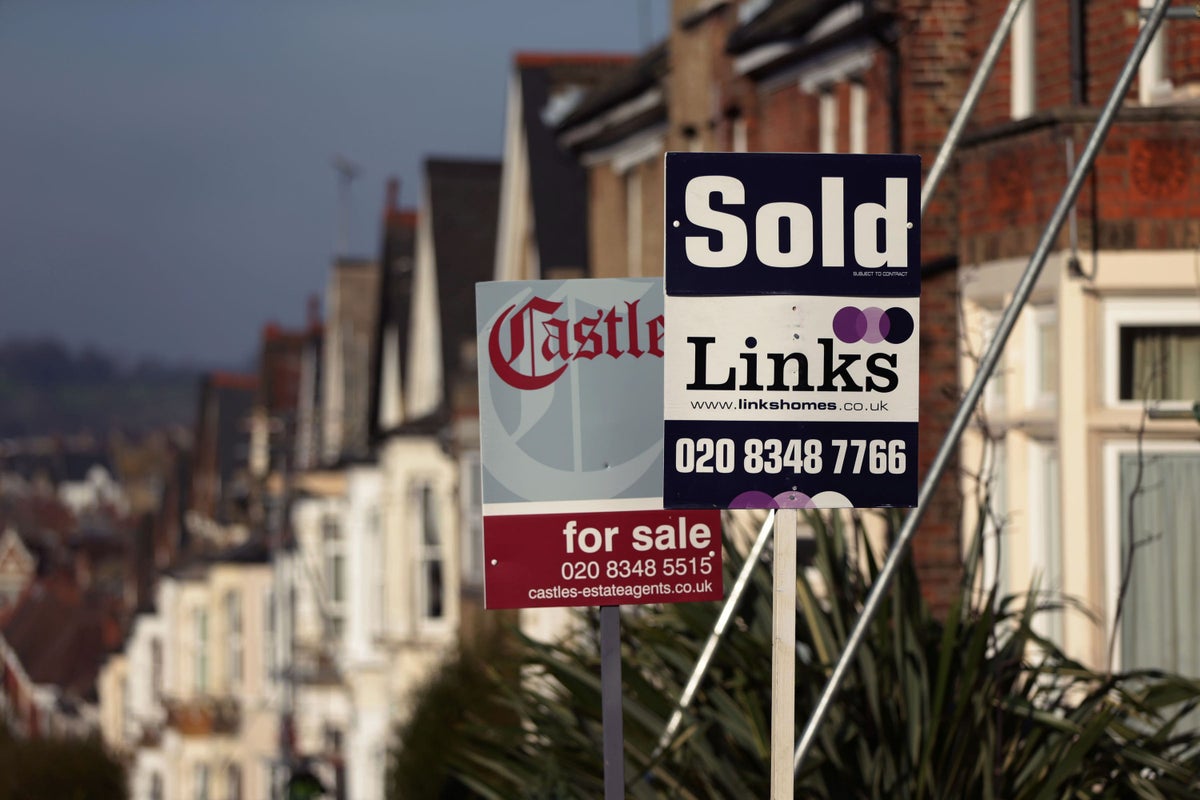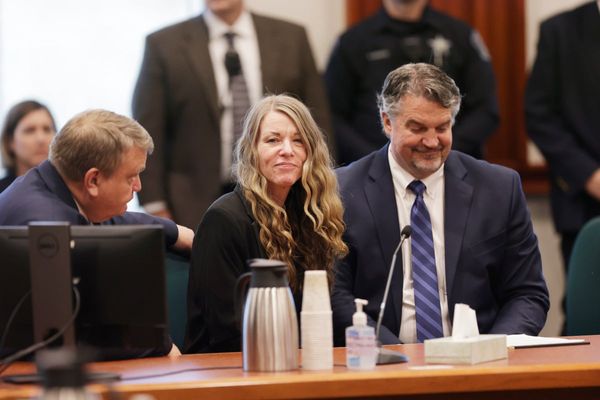
The average house price edged down in September, from a record high recorded the previous month, according to an index.
Figures going back to the summer indicate the housing market may have already entered a more sustained period of slower growth, Halifax said.
Across the UK, house prices fell back slightly by 0.1% in September, according to the figures from Halifax.
The annual rate of house price growth also slowed to 9.9% in September from 11.4% in August – returning to single digits for the first time since January.
A typical UK property now costs £293,835, according to Halifax’s index.
In reality house prices have been largely flat since June, up by around £250— Kim Kinnaird, Halifax Mortgages
The number of mortgage products available fell sharply following the recent mini-budget and as product choice has gradually returned, lenders have been pricing their mortgage deals upwards.
The average five-year fixed-rate mortgage and the average two-year fix breached 6% this week – the first time this has happened in more than a decade – according to data from Moneyfacts.co.uk.
Kim Kinnaird, director, Halifax Mortgages, said: “The events of the last few weeks have led to greater economic uncertainty, however in reality house prices have been largely flat since June, up by around £250.
“This compares to a rise of more than £10,000 during the previous quarter, suggesting the housing market may have already entered a more sustained period of slower growth.
“Predicting what happens next means making sense of the many variables now at play and the housing market has consistently defied expectations in recent times.
“While stamp duty cuts, the short supply of homes for sale and a strong labour market all support house prices, the prospect of interest rates continuing to rise sharply amid the cost-of-living squeeze, plus the impact in recent weeks of higher mortgage borrowing costs on affordability, are likely to exert more significant downward pressure on house prices in the months ahead.
“This will undoubtedly be a cause of some concern for homeowners but the unprecedented rate of property price inflation we’ve seen in recent years has been far above the historic average.
“It’s important to look at slower growth in this context – since the start of the pandemic average property values have risen by around 23% (nearly £55,000) with detached house prices up by more than £100,000 over the same period.”
Looking across the UK, annual house price growth is strongest in Wales, at 14.8%.
Meanwhile, Scotland, London, Eastern England and the North East of England have seen annual house price inflation fall to single-digit levels.
The West Midlands has overtaken the South West to record the strongest rate of annual growth in England, with house prices rising by 13.3% over the past year.
Tom Bill, head of UK residential research at estate agent Knight Frank, said: “It’s a fairly safe bet that UK house prices have now peaked.
“The impact of rising mortgage rates will begin to hit demand and spending power in coming months, which we believe will lead to a fall of 10% over the next two years for UK prices.”
Mark Harris, chief executive of mortgage broker SPF Private Clients, said: “While the turmoil of the past couple of weeks will go down in the history books, the money markets seem to have settled a little.
“It is important to reiterate that the mortgage market is still open for business.”
As the cost-of-living crisis is looming, some buyers are compromising on their priorities in order to secure a property under their initial budget— Matthew Thompson
Alice Haine, a personal finance analyst at Bestinvest, said: “While the pace of mortgage rate rises has accelerated since the mini-budget, the situation is not a complete surprise.
“Mortgage costs have been increasing steadily since December when the Bank of England first started pushing up its base rate from a record low of 0.1% in a bid to curb runaway inflation.
“The base rate now sits at 2.25%, with expectations it might jump up to 1% at the Monetary Policy Committee meeting next month, pushing up mortgage rates once again.”
Nathan Emerson, chief executive of estate agents’ body Propertymark, said: “Buyers… are analysing the market and taking their time in moving so we will continue to see this being reflected in the prices being achieved.”
Matthew Thompson, head of sales at Chestertons, said the estate agent is “encountering an increasing number of house hunters who want to secure a property as soon as possible and take out a fixed-rate mortgage”.
He added: “This has contributed to September’s property market remaining busy and competitive. As the cost-of-living crisis is looming, some buyers are compromising on their priorities in order to secure a property under their initial budget.”
Martin Beck, chief economic advisor to the EY Item Club, said: “Combined with the weakening economic outlook and squeezed household incomes, the EY Item Club expects property values to fall by 5% or more over the next year or so.”
Nicky Stevenson, managing director at estate agent Fine & Country, said sterling’s weakness provides a window of opportunity for foreign investors, adding: “In higher value market areas like London, significant savings can now be made compared with the start of the year and we are already seeing a spike in interest from overseas.”
Iain McKenzie, chief executive of the Guild of Property Professionals, said: “Estate agents are still seeing stock shortages in many areas of the country, something which has supported elevated house prices throughout the boom.”
Here are average house prices in September and the annual increase, according to Halifax:
– East Midlands, £245,082, 11.7%– Eastern England, £340,839, 9.7%– London, £553,849, 8.1%– North East, £170,999, 9.9%– North West, £229,106, 12.8%– Northern Ireland, £184,570, 10.9%– Scotland, £204,305, 8.5%– South East, £399,895, 10.6%– South West, £311,229, 12.5%– Wales, £224,490, 14.8%– West Midlands, £255,822, 13.3%– Yorkshire and the Humber, £208,318, 11.4%







